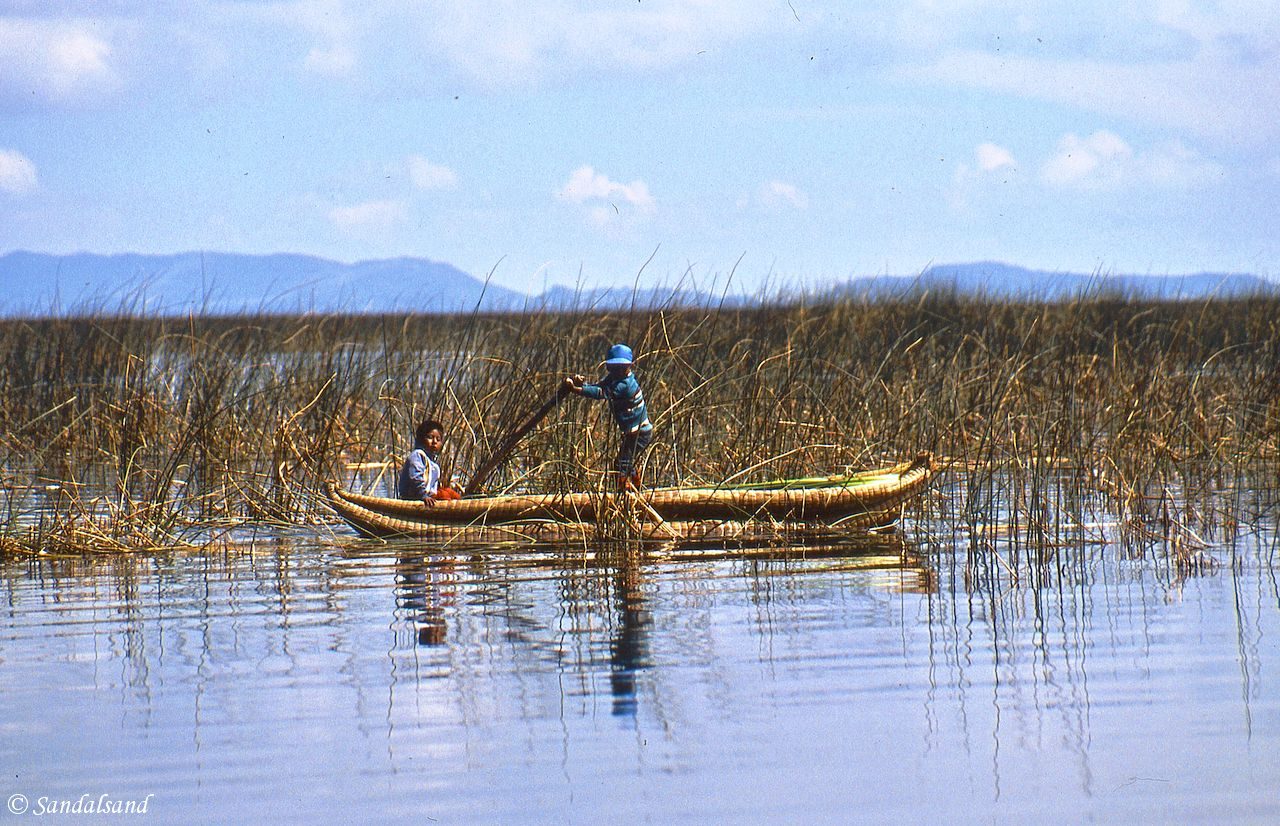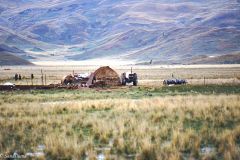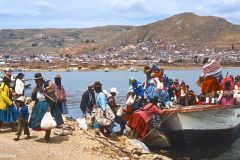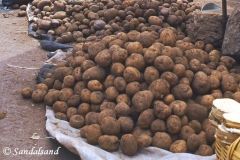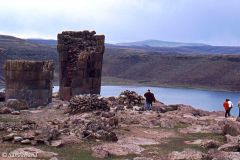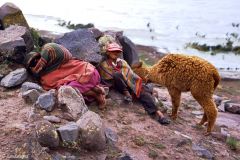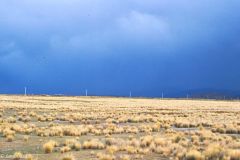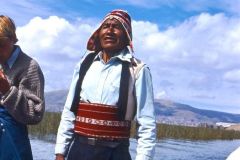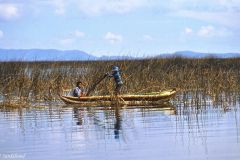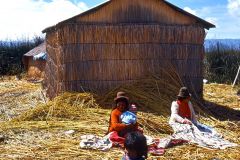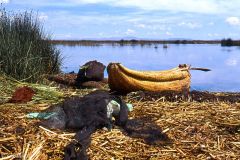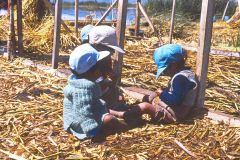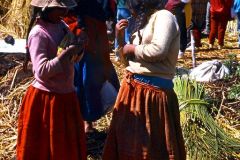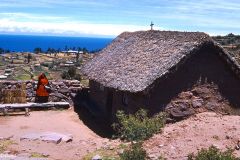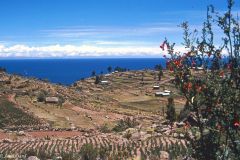Read about a visit to Puno and the reed boats on Lake Titicaca. The next leg of our journey through South America went to the town of Puno. It is right on the world’s highest navigable lake, Titicaca, 3,800 metres above sea level.
This article is part of a travelogue from of a five month journey in 1987-1988 to several countries in South America: Brazil, Peru, Ecuador, Bolivia, Chile.
Friday 25.12.1987, Cuzco – Puno
The train left on time (!) and arrived in Puno after almost 11 hours. The comfort was so and so as the seats upholstered but fixed in a very upright position. They sold an alright fixed lunch for 120 intis (1.5 USD).
The landscape and views along the track were attractive. The mountains north of Cuzco soon gave way to huge, flat plains with comparatively “flat” mountains around. The soil seemed quite fertile despite altitudes up to 4,300 metres and the lack of proper cultivation tools in the hands of the poor farmers. There were a lot of sheep, cattle, llamas and alpacas.
- Hotel Los Uros. Calle Valcarel no. 137. It was an alright place which claimed to have hot showers. Only 230 intis (2.7 USD) for a double rooms with bath. Clean. Map
Saturday 26.12.1987, Puno
We are departing for La Paz, Bolivia on Monday on a minibus via Copacabana. We paid 300 intis (3.5 USD) for the ticket (Cosvial Tours), somewhat cheaper than the 450-500 we had heard of before. Tomorrow we are off on a boat trip the entire day on Lake Titicaca (300 intis) to the floating reed islands of Los Uros and to the island of Taquile.
At the cost of 120 intis we joined a mini bus excursion for a couple of hours to Sillustani where they have some barrel shaped high stone ruins which in pre-Inca times functioned as grave chambers. It was fair enough as we had not much more to do in a rather boring Puno. There were few places to go shopping as most shops were closed. The market was big but unfortunately with no tourist stuff.
Sunday 27.12.1987, Puno
The day was spent on a boat on Lake Titicaca with other tourists and local Indians. The boat was quite small and with a lot of people on board, even on the roof.
The boat was slow and took about three-four hours to Taquile Island. On the way we went “ashore” on one of the floating reed islands in the bay of Puno. Here we found a number of Indians in their reed cabins doing fishing from their reed boats. There are few genuine inhabitants left and this is quite comprehensible. There is a smell of rotten reed, there is nowhere to go and they are unable to grow anything.
The Taquile Island was beautiful and many tourists stay the night at the friendly local population. Situated right outside Puno’s bay and with a view over the entire lake, this island is made of rocks and nothing else. The inhabitants have constructed terraces everywhere and the colourfully dressed Indians must climb high up a (for us) strenuous path from the quay to the settlements on the hilltops.
Read more
The next chapter: Impressions from Peru: Like in Brazil and Ecuador we stayed in Peru approximately a month (32 days) and I would like to summarise some impressions from our stay.
Click to read the introduction to this journey
Click to view a full screen map of the journey

